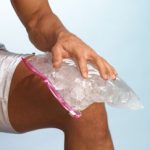Please Hold the R.I.C.E.

Please Hold the R.I.C.E.
I have been in the rehabilitation field since 1992. Since the very beginning I was always told that when treating an acute injury you should follow the age old acronym of R.I.C.E. or Rest, Ice, Compression and Elevation. The concept was originally introduced by one of the most respected names in rehabilitation, Dr. Gabe Mirkin back in 1978. Recent research has determined now that perhaps that this is not the way to go. Dr. Mirkin himself wrote an article recently concurring with the latest research.
I have always been one to promote the use of ice for both acute and chronic injuries. I certainly was led to believe that this was the appropriate means of treatment based upon past research, but I also believed that it was effective because of both personal and clinical results that I have experienced over my many years.
The research has now shown that the effects of ice on an acute injury may actually impede the healing process therefore negatively impacting recovery. When the tissue is damaged through trauma or develops muscle soreness from intense exercise, your immune system begins a the process of inflammation. This process is the same as when you need your immune system to fend of germs except different types of cells are produced. Inflammatory cells are produced by the immune system to begin the process of healing. The inflammatory cells called macrophages release a hormone called Insulin-like growth Factor (IGF-1) into the damaged tissues, which helps muscles and other injured parts to heal. However, applying ice to reduce swelling actually delays healing by preventing the body from releasing IGF-1.
Ice has been shown to constrict the blood vessels near the injury and shut off the blood flow that brings in the healing cells of inflammation.
I have always been leery of the use of NSAID’s (Non-Steroidal Anti-Inflammatory Drugs) when treating muscle injuries for the same reason as stated above. We NEED the inflammatory process to take place in order for the healing to continue. With the research showing now that icing is not recommended either, where does that leave us?
Well, if there is one thing you can learn from this is that the research then and now is always under scrutiny and changes all the time. Experience is the ultimate equalizer when it comes to right and wrong. I have seen tremendous success with icing over the years and intend to still make recommendation to ice when appropriate. I have never considered ice to be the key factor to tissue repair as much as I believe in rest, movement, massage and appropriate exercise. Since applying ice to an injury has been shown to reduce pain, it is still acceptable to cool an injured body part for short periods soon after the injury occurs. You could apply the ice for up to 10 minutes, remove it for 20 minutes, and repeat the 10-minute application once or twice. So instead of popping the NSAID’s that we know will only prevent what the body is trying to do naturally, we should still ice for the pain when needed, taking extra precaution to rest the injured area.

